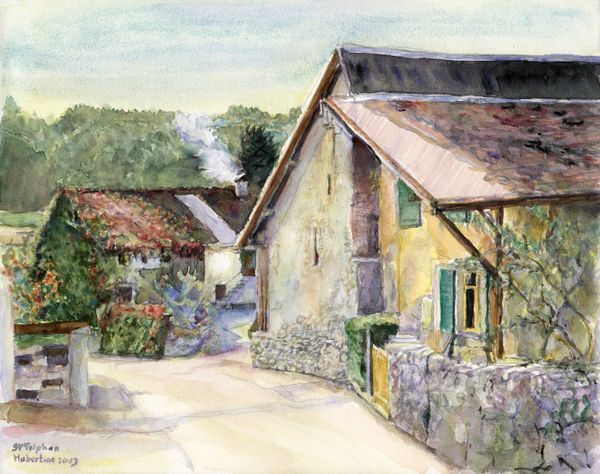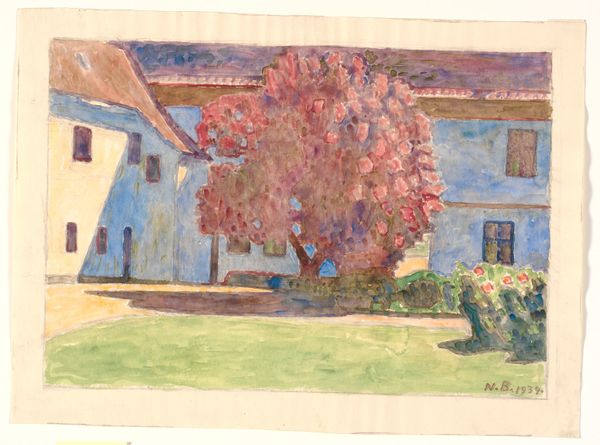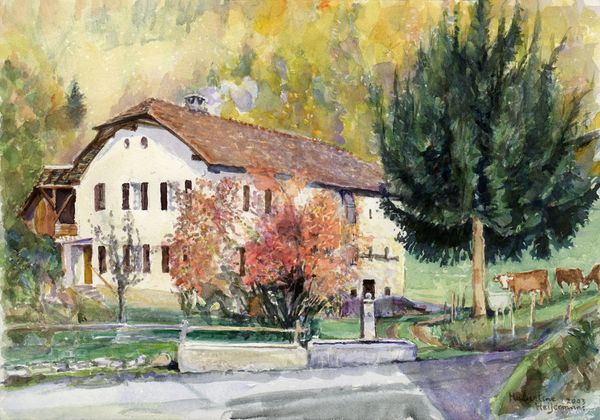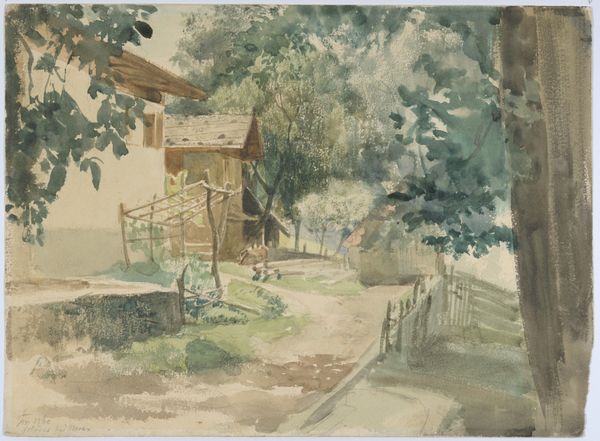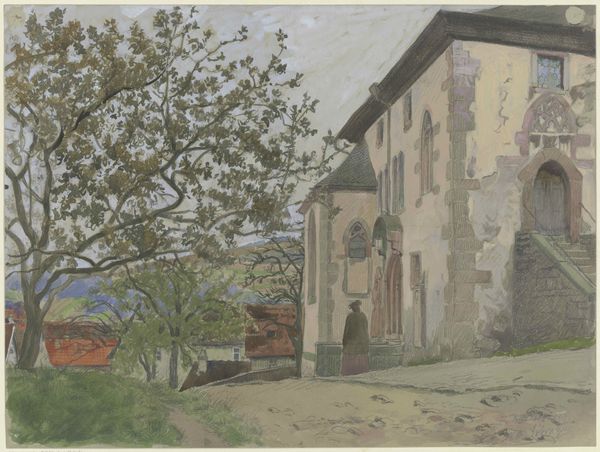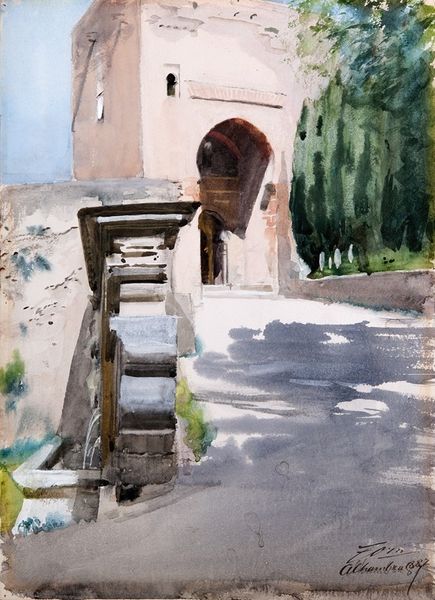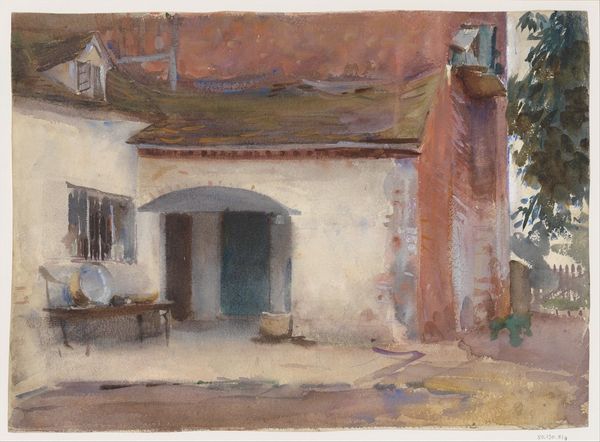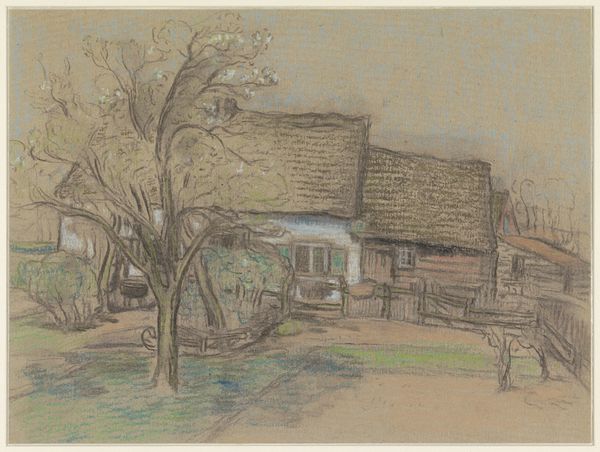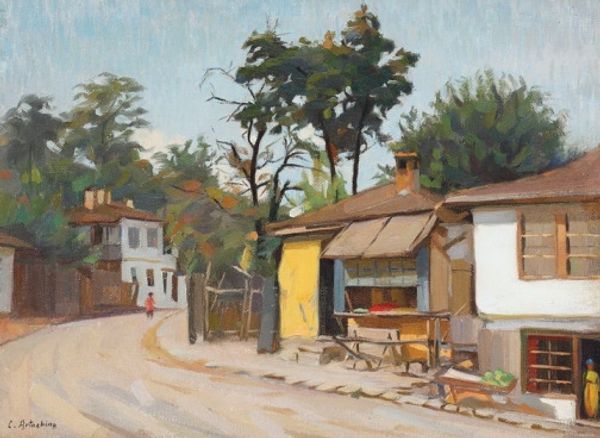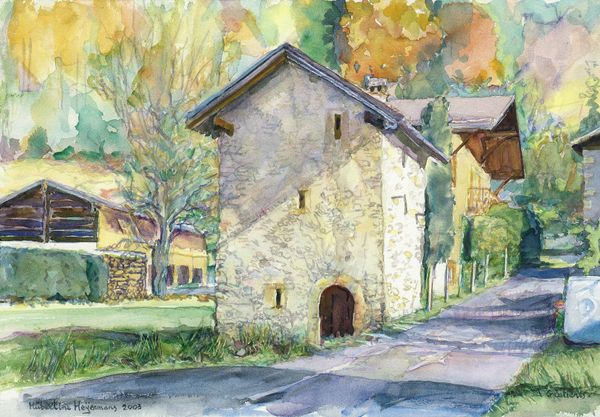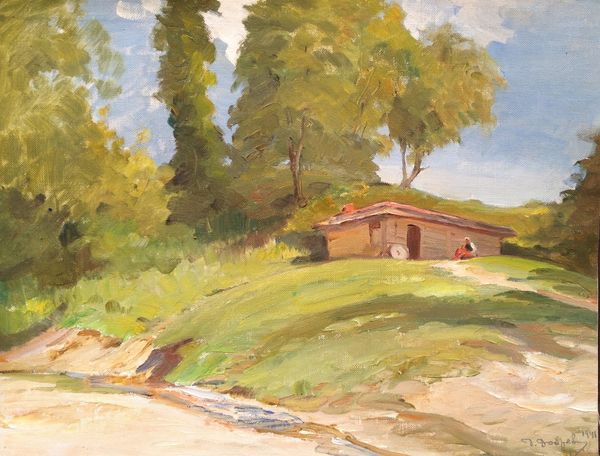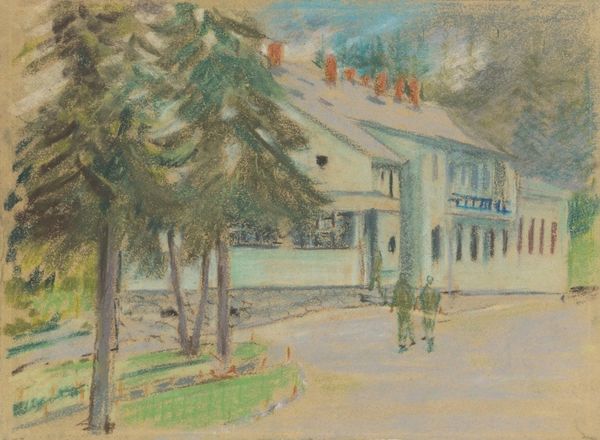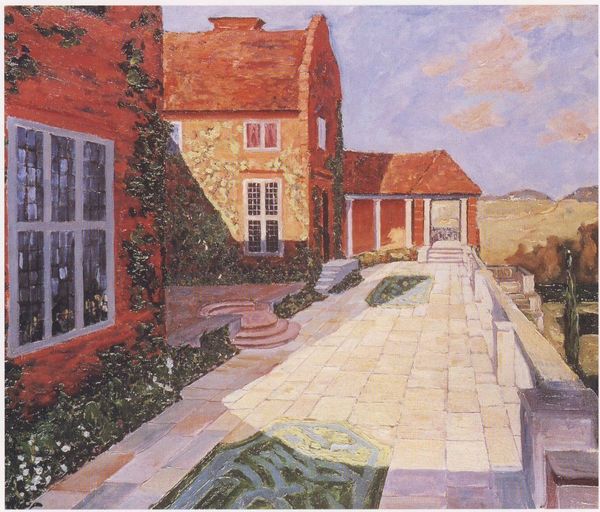
Dimensions: 38 x 54 cm
Copyright: Hubertine Heijermans,Fair Use
Curator: Hubertine Heijermans created "Fountain in the village of Saint-Triphon, canton Vaud" in 2003. This watercolor painting presents a sun-drenched village scene centered around a quaint fountain. Editor: The overall composition immediately strikes me as peaceful. The cool tones in the stone and water juxtaposed with the warmth of the buildings create a balanced harmony. I like the shadow play too. Curator: Let's examine that watercolor technique further. Look at the fluid brushstrokes and transparent washes, applied alla prima, capturing the immediacy of the light and atmosphere of this location. It seems created entirely en plein air. Notice also how the artist's hand translates that water flow, almost dripping, bleeding its blues, violets, and greens on paper, making them indistinguishable from the nearby stonework, which is of the same tonality. Editor: The focus on capturing an immediate, natural moment through watercolor is fascinating. And water, quite literally, creates it own kind of effect in painting itself. The buildings that recede back into shadow hint at lives and work happening just beyond our view, framed, if you like, by the flowers on top of the fountain, their red acting almost as a punctuation point in the middle ground. The materiality, however, seems to emphasize the ease with which these types of scenes were mass produced through amateur renderings. What's being left out of this scene is as compelling as what is being focused upon: where are the inhabitants? Curator: That is a useful observation. Indeed, one might be forgiven for believing in its nostalgic yearning. However, let’s acknowledge its formal qualities: see how Heijermans manipulates the picture plane and tonal palette through compositional design to provide atmospheric effects, focusing less on representing literal figures or labor and more on distilling an ideal vision of tranquility. Editor: But could it not also be argued that this focus—the tranquility, the pastoral scene, that you call attention to— obscures real labour, real struggles and lived experience for all who depend upon that precious fountain? Perhaps the impressionistic technique does not elevate the art; rather, it only romanticizes the daily labor through that very visual strategy. Curator: Indeed. An artful dance then: this technique evokes questions about our idealization and obfuscation of what labor itself means. Thank you for helping explore these perspectives together. Editor: It's a rewarding process. These types of analyses highlight the complex ways visual materiality speaks to social consciousness.
Comments
No comments
Be the first to comment and join the conversation on the ultimate creative platform.
